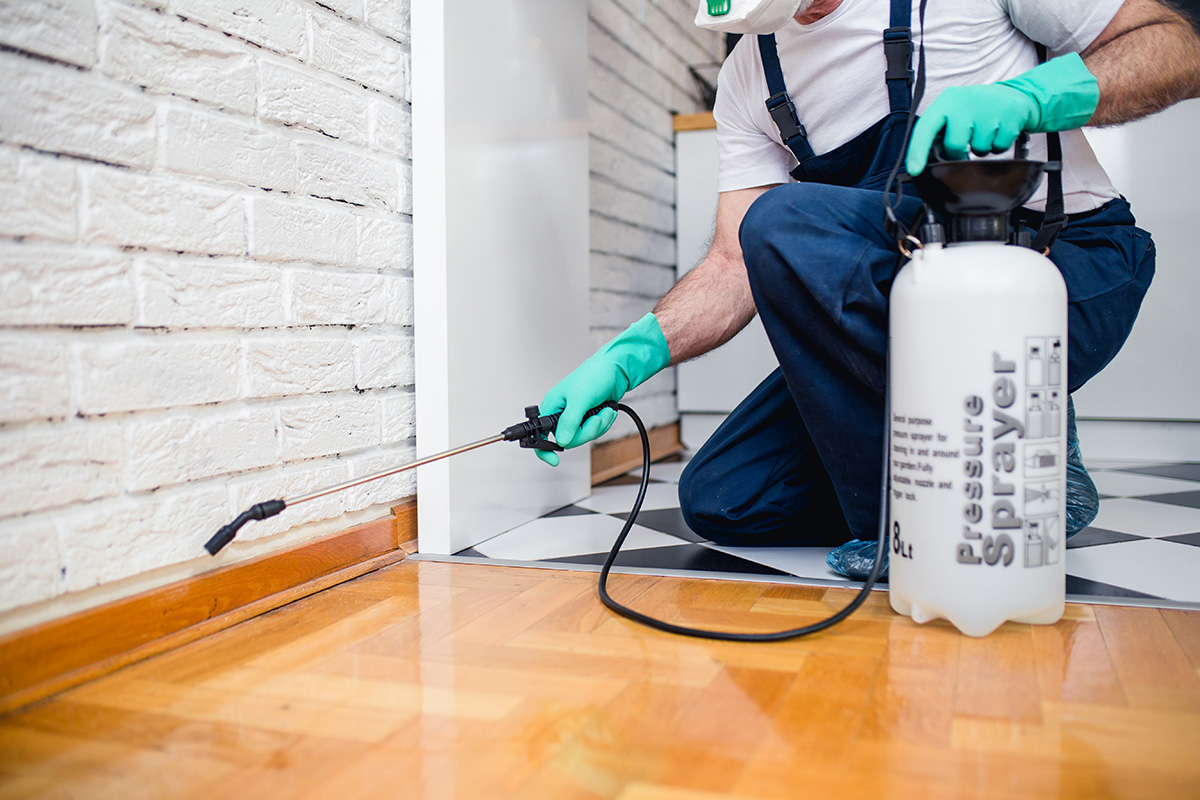A1 Bed Bug Exterminator Charlotte - Specialized Bed Bug Elimination
Wiki Article
Bed Pest Therapy Failure: Contrasting Chemical Vs. Non-Chemical Solutions
In the world of insect control, especially when managing the persistent issue of bed insects, the choice between chemical and non-chemical therapy solutions can be a pivotal one. Both strategies provide distinct benefits and disadvantages, influencing variables such as effectiveness, security factors to consider, and general price. By analyzing the nuanced details of each approach, a more clear understanding of which path to pursue in resolving a bed insect invasion can be attained.Effectiveness of Chemical Treatments
Chemical treatments for bed bug problems have been extensively identified for their quick and potent efficiency in eradicating these insects. When considering the effectiveness of chemical therapies, it is crucial to comprehend that they can offer a fast and detailed option to a bed insect problem. Professional pest control operators often depend on insecticides to target bed bugs at various phases of their life process, including eggs, grownups, and fairies. These chemicals usually function by interrupting the bed bugs' nerves, causing paralysis and eventual death.Furthermore, chemical therapies have the advantage of offering recurring results, suggesting that they can proceed to eliminate bed pests also after the first application. This recurring activity is particularly advantageous in combating any kind of possible re-infestations. Furthermore, the quick action of chemical therapies can bring alleviation to people facing extreme bed insect invasions, enabling them to reclaim control of their space swiftly.
Security Worry About Chemical Solutions
One vital element that requires mindful consideration when making use of chemical options for bed insect treatment is guaranteeing the safety and security of occupants and the environment. Exposure to specific chemicals utilized in bed bug therapies can lead to breathing problems, skin irritation, or other damaging responses, specifically in people with pre-existing conditions or level of sensitivities.Furthermore, the ecological influence of chemical services is one more significant factor to consider. Some pesticides used in bed pest treatments might be hazardous to helpful pests, wildlife, and environments if they seep right into the dirt or water supply. It is important to make use of chemical treatments deliberately, adhering to safety and security standards, and considering much less harmful options to mitigate these threats and make sure the safe and efficient management of bed bug invasions.
Benefits of Non-Chemical Strategies
Thinking about the possible safety and security problems and ecological influence linked with chemical options for bed bug treatment, exploring non-chemical approaches presents a promising choice with several distinct benefits. Non-chemical treatments are ecologically friendly, as they do not contribute to air or water air pollution, making them a sustainable choice for parasite control.Furthermore, non-chemical remedies can be effective in targeting bed bugs, consisting of hard-to-reach areas where chemical therapies may not permeate. Approaches such as warm therapy, vacuuming, steam cleansing, and cushion encasements provide extensive eradication without using unsafe chemicals. Moreover, non-chemical techniques can be much less disruptive, requiring marginal preparation and permitting quicker reentry into dealt with areas. In general, choosing for non-chemical bed pest treatment methods not just focuses on safety and security and ecological defense however also guarantees reliable and detailed bug control.
Limitations of Non-Chemical Treatments

Furthermore, non-chemical treatments commonly call for multiple applications to accomplish effective obliteration. This can be taxing and may not constantly ensure full removal of all bed bugs and their eggs, particularly in hidden or hard-to-reach locations.
Moreover, the success of non-chemical therapies greatly relies upon correct implementation and thoroughness, which can be testing for people without expert know-how. Insufficient application of non-chemical techniques might lead to insufficient obliteration, causing persistent infestations and the demand for added treatments.
For that reason, while non-chemical treatments have their benefits, it is important to acknowledge these constraints and consider them when identifying spider control companies one of the most effective approach for handling bed insect invasions.
Expense Comparison: Chemical Vs. Non-Chemical Options
Given the limitations related to non-chemical therapies, a crucial facet to evaluate in the context of bed insect monitoring is the expense contrast in between chemical and non-chemical alternatives. Chemical therapies typically entail the application of pesticides by specialists, which can vary from $250 to $900 per area, relying on the extent of the infestation and the dimension of the location to be dealt with. In contrast, non-chemical treatments like warmth treatment or steam can be extra expensive, with expenses ranging from $1,000 to $6,000 for an entire home. While the initial cost of chemical therapies might appear reduced, several therapies may be required to fully get rid of the infestation, potentially boosting the general price. On the various other hand, non-chemical alternatives may give a more from this source sustainable and green solution, although they can be cost-prohibitive for some people. Ultimately, when considering the price of bed pest treatment choices, it is essential to weigh the in advance expenses versus the effectiveness and long-lasting sustainability of the chosen technique.Final Thought

anchor Taking into consideration the prospective safety problems and ecological influence connected with chemical solutions for bed pest therapy, exploring non-chemical strategies offers a promising choice with a number of unique benefits.Given the constraints connected with non-chemical therapies, a necessary facet to assess in the context of bed pest monitoring is the cost comparison between chemical and non-chemical options. In comparison, non-chemical treatments like warm therapy or vapor can be extra pricey, with expenses varying from $1,000 to $6,000 for a whole home. While the initial price of chemical treatments may appear lower, multiple treatments may be needed to completely get rid of the invasion, possibly raising the total cost.In final thought, when comparing chemical and non-chemical bed pest treatment choices, it is crucial to consider performance, safety and security, benefits, limitations, and expense.
Report this wiki page